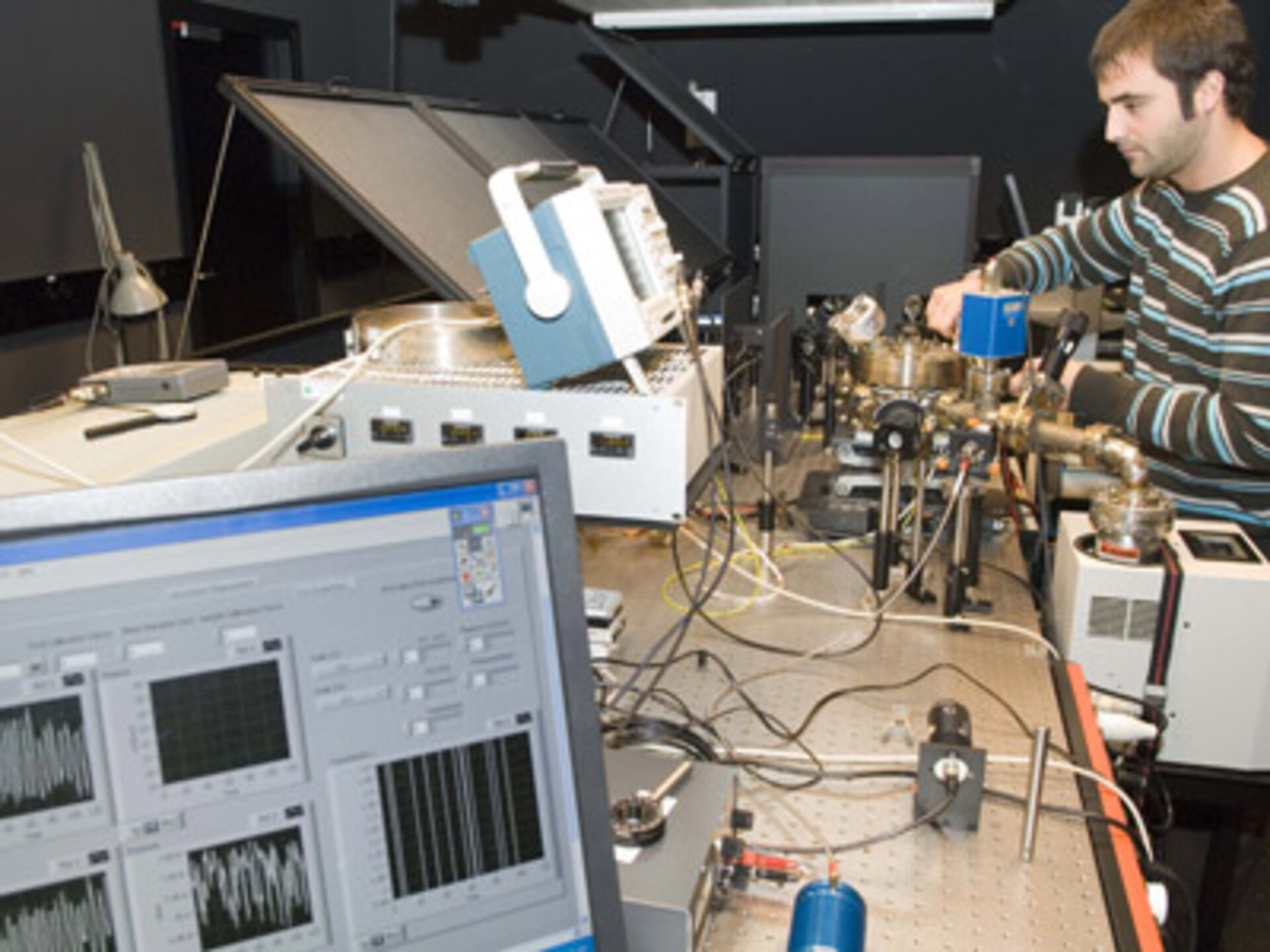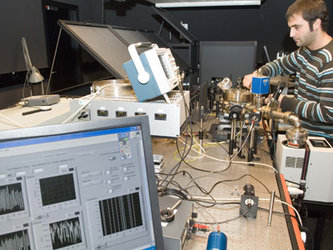Opto-Electronics Laboratory
What is it for?
Many of the tests carried out by the Opto-Electronics Laboratory take place behind strictly sealed doors, safely out of human sight. This is due to its specialised area of interest: the Laboratory investigates devices that convert electrical signals into light and vice versa, and is particularly active in the testing and assessment of high-performance lasers.
The Laboratory was established in 2003 to meet growing project demand for laser testing. Lasers are versatile tools for space. They can provide precision range measurements or excite materials to acquire spectroscopy data. Used within radar-like 'lidars' they can gather a complete picture of surface terrain or three-dimensional samplings of planetary atmospheres.
Lasers are also important to the working of other spaceborne devices including many types of spectrometers, interferometers and atomic clocks. In addition laser light is a promising means of space communications, possessing high bandwidth while avoiding electromagnetic interference.
Related fields of interest for the Laboratory include fibre optic communication links as well as fibre optic sensor networks serving as a satellite's 'nervous system', optical multiplexing techniques, advanced detectors and arrays and the effects of the space environment on opto-electronic devices.











